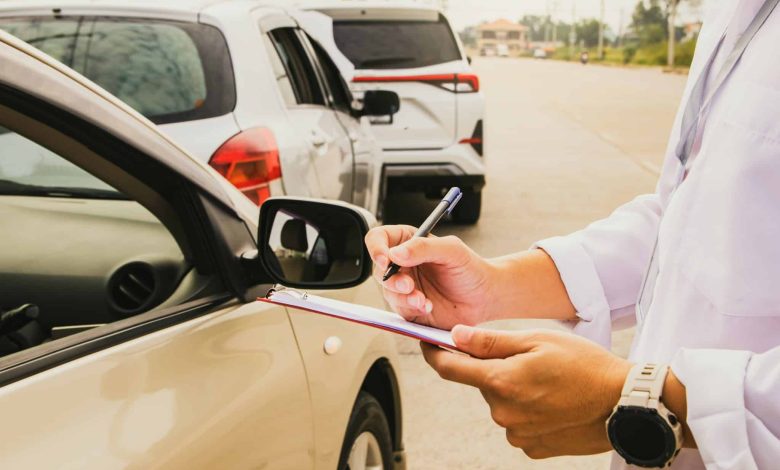Understanding Fault in Car Accidents: Who’s Responsible and How It’s Prove

Determining fault after a car accident isn’t always as simple as pointing a finger. While it might be obvious to you who caused the crash, proving that legally—and getting compensated accordingly—requires a clear understanding of how fault is assigned and what evidence is needed.
Whether you’re involved in a minor fender bender or a serious collision, understanding how fault is determined can make a big difference in your ability to recover damages for medical bills, vehicle repairs, lost wages, and more.
What Does “Fault” Mean in a Car Accident?
In legal terms, “fault” refers to the party (or parties) whose negligence caused the accident. Negligence means someone failed to act with reasonable care, and that failure directly led to the crash and the resulting damages.
For example:
- A driver runs a red light and hits another vehicle.
- A speeding driver loses control and crashes into a parked car.
- A distracted driver rear-ends a stopped vehicle.
In each case, the at-fault party is generally responsible for paying damages, usually through their insurance company.
How Is Fault Determined?
Fault is typically determined through a combination of the following:
1. Police Reports
When officers respond to an accident, they document what happened, interview drivers and witnesses, and may issue citations. The report often includes the officer’s opinion on who caused the crash, which can be powerful evidence when filing a claim.
2. Physical Evidence
Skid marks, vehicle damage, debris, and road conditions can all help reconstruct how the accident occurred. For example, damage to the rear of a vehicle usually supports a rear-end collision claim.
Photos taken at the scene are critical. They provide context and help preserve evidence that might otherwise disappear.
3. Witness Statements
Third-party witnesses can provide unbiased accounts of what they saw. Their testimony can help confirm or challenge the drivers’ versions of events, especially in cases where liability is disputed.
4. Surveillance or Dashcam Footage
Video evidence from traffic cameras, security systems, or dashcams can clearly show who was driving recklessly, running red lights, or failing to yield. These can be especially valuable when both drivers tell different stories.
5. Accident Reconstruction Experts
In more complex cases—such as multi-vehicle collisions or high-speed crashes—experts may be brought in to analyze the scene, vehicle damage, and other data to provide a professional opinion on what happened.
Types of Negligence Laws
Fault doesn’t always mean one driver is 100% to blame. Many states use comparative negligence laws, which can affect how much compensation you receive. Here’s a breakdown of the most common types:
Pure Comparative Negligence
Each party can recover damages in proportion to their level of fault. For example, if you’re found to be 30% at fault and your damages are $10,000, you’d still receive $7,000.
Modified Comparative Negligence
You can recover damages only if you’re less than a certain percentage at fault—usually 50% or 51%. If you’re more at fault than that, you can’t collect anything.
Contributory Negligence
This is the strictest rule. If you’re found to be even 1% at fault, you may be barred from recovering any damages. Only a few states still follow this rule.
Common Disputes Over Fault
Fault can become a sticking point, especially when:
- Both drivers claim the other was speeding or distracted.
- There’s no clear physical evidence or witnesses.
- One driver left the scene (hit-and-run).
- Weather or road conditions played a role.
Insurance companies will do their own investigation, and sometimes they’ll assign partial blame to reduce what they have to pay. That’s why it’s important to have solid evidence—and legal support—on your side.
Why Fault Matters
The determination of fault directly affects:
- Who pays for damages.
- How much is paid out.
- Whether your insurance rates go up.
- Your ability to file a personal injury lawsuit.
If you’re wrongly blamed or the other party refuses to admit fault, you could be left paying out of pocket or receiving far less than you deserve.
How a Car Accident Lawyer Can Help
Proving fault can be complicated—especially if the insurance company is fighting back or trying to shift blame. An experienced car accident lawyer can:
- Collect and analyze evidence
- Interview witnesses
- Work with accident reconstruction experts
- Challenge incorrect police reports
- Negotiate with insurance companies
- Represent you in court if needed
They’ll ensure that your side of the story is fully heard and that you receive the compensation you’re legally entitled to.
Final Thoughts
Fault isn’t just a matter of opinion—it’s a legal finding with real consequences. Understanding how fault is determined and what factors come into play can help protect your rights after an accident. If there’s any doubt or dispute over who caused the crash, don’t try to handle it alone. The right legal support can make all the difference. We recommend anchorage car accident lawyer.




